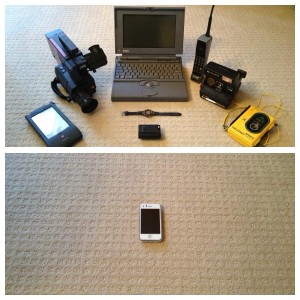
Kentuckiana Court Reporters has been an outspoken advocate for lowering the cost of depositions. Not surprisingly, our competitors have reacted very negatively toward our effort to lower costs without compromising quality. Their first reaction was to claim that our prices were not really as low as we claimed. Some even implied that we were secretly adding hidden costs or bundling unwanted services into our invoices. Our response was simple: apples-to-apples, we guarantee the lowest rate on the market. If we cannot beat a competitor’s price without compromising service, then we will endorse our competitor’s product. The response from our competitors has now evolved to claim that we must somehow sacrifice quality in order to create low cost depositions. The purpose of this article is to address the issue of pricing head-on and allow an informed consumer to make a decision that is best for them.
Do You Get What You Pay For?
I was at a court reporting conference last weekend where an attorney was speaking on the topic of “what lawyers look for in a court reporter”. During his presentation he was asked if price was an important factor in choosing a reporter. I was stunned when he replied that “you get what you pay for” and concluded that price should not be a determining factor in choosing a court reporter. It was shocking to hear an attorney admit to being so cavalier with his client’s money. I cannot imagine what his clients would say if they knew that he was not considering price when choosing the vendors that his client must pay. Moreover, the fallacy of “high prices means better service” seems obvious. I guess we should charge this guy $10 per page of deposition transcript. After all, a higher price must mean a better product, right? Wrong.
Historically, the Price of Goods and Services Decrease Over Time.
It seems like common sense to say that the highest priced court reporter is not necessarily the best court reporter. Likewise, the average hourly rate of top defense attorneys in Louisville, Kentucky is significantly lower than those of defense attorneys in Chicago or New York. I would love to hear someone tell Louisville litigators that they are not as good at trying cases as their New York counter-parts because they do not charge as much! The cost of services has to do with a variety of factors. Some factors, like cost of living, cannot be controlled (unless you move). Others factors, such as standardization and technological improvements, are easily implemented. In 1939 the cost of a 27″ RCA color TV was $1295 (when adjusted for inflation). This was a tiny TV that was only capable of receiving four channels and it was probably too heavy for one person to lift. Today, you can buy a 32″ flat-screen with High Definition and Internet connectivity for less than $1000. Televisions cost less today than 50 years ago and they are larger, lighter and offer better services than ever before. Likewise, the real price of cars has fallen 10% since 1998. Computers are an even more obvious example. NASA spent about $23 billion to get to the moon. Today, your iPad has a much greater computing capacity than NASA’s billions of dollars were able to purchase. So, to the attorney who believes that “you get what you pay for”, I would say that he can enjoy driving his 1998 Ford Taurus, relaxing in front of his 27″ TV and typing punch cards into a computer that fills his entire basement. He will be paying far more than me while I drive a 2013 Ford Fusion, watch a 50″ HD TV and review transcripts from an iPad.

Henry Ford Knew What He Was Doing.
As we all know, Henry Ford revolutionized the American economy by standardizing tasks in the assembly of an automobile. On an assembly line, each individual has an specialized task. One person may be responsible for the installation of an engine, while another works solely on the drive train. This is in stark contrast to Ford’s competitors who would build one car at a time from start to finish. By developing specialists, Ford could build higher quality cars very quickly and at very little cost. The principles of task standardization apply to court reporting in the same way that they did the automobile. Many attorneys are not aware that more work goes into the production of their transcript after the deposition than the time actually spent in the deposition. Kentuckiana Court Reporters has adopted these principles of standardization and has been able to lower costs while improving quality.

Assembling a Deposition Transcript.
The first task faced by a court reporter is not actually going to a deposition, it is managing their calendar and ensuring that all scheduled depositions are covered. At Kentuckiana, we have a Scheduling Manager, Amy McBride, who takes calls 24 hours per day to schedule depositions, open files, and ensure that a court reporter is present to cover every deposition as scheduled. She then coordinates with the court reporter who attends the depositions and generates a rough transcript. From there, the transcript goes to a scopist. The scopist has the responsibility of reviewing the transcript to ensure that all of the reporter’s shorthand notes have been properly translated into English. After the scopist is finished, she turns the transcript over to a proofreader who reviews all of the text while listening to audio of the deposition to ensure complete accuracy in substance, spelling and grammar. From there, the transcript is turned over to a production specialist who formats the text so that it may be published while also creating e-trans, PDFs and synchronized multimedia CDs. Ultimately, your transcript is billed and delivered by a courier. Each specialist has a single unique task which they are able to master and efficiently complete. This is in stark comparison to a single person trying to do every task just mentioned.
Compare a court reporter to a restaurant for a moment. Would you eat at a restaurant where only one person performed every task? Imagine if one person greeted you, waited on you, cooked your food, cleaned your table and billed your meal. It would likely be the longest dinner you ever ate and its unlikely that more than a couple of people could be served at a time. The same is true of reporting. It is impossible for one person to do every job needed to complete a transcript unless that person has very few depositions to produce. Even then, efficiency and accuracy will be lost as the same set of eyes are responsible for every step.
Shared Cost.
Court Reporters must use a variety of software to produce transcripts. For example, there are popular formatting systems that are used to generate synchronized transcripts. Reporters must pay monthly licensing fees to use this type of software. Ultimately those costs are passed on to the consumer (you). If that fee is spread across 300 depositions, it is a lot cheaper than if it is spread across ten depositions. Kentuckiana’s volume of production allows us to lower your costs.
We are Committed to Always Improving.
As you can see, we have been able to reduce our prices by investing in specialists and modern technology – – not by cutting corners. Our transcripts are reviewed by at least four sets of eyes before they leave our offices. Does it mean that every single transcript will be perfect? We hope so. However, every system created by a human is fallible and we constantly update our policies and internal procedures to try and improve. The bottom line is that we are working hard to lower your cost, offer an improved product and make our staff the friendliest in town. The next time that someone tells you that “you pay for what you get”, you might just want to reply that “a sucker is born every day”.

